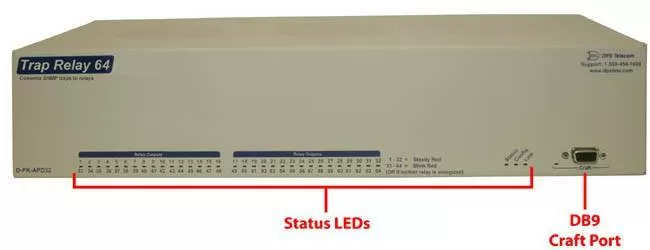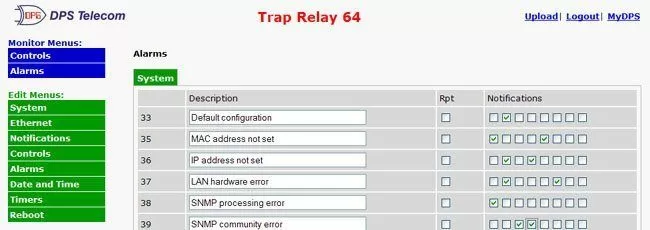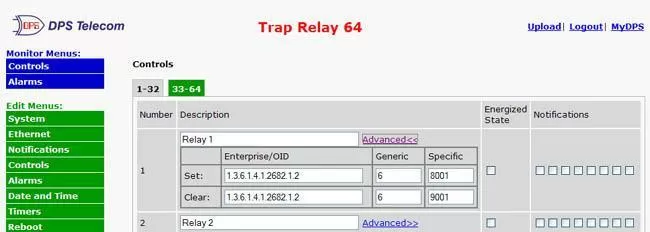Check out our White Paper Series!
A complete library of helpful advice and survival guides for every aspect of system monitoring and control.
1-800-693-0351
Have a specific question? Ask our team of expert engineers and get a specific answer!
Sign up for the next DPS Factory Training!

Whether you're new to our equipment or you've used it for years, DPS factory training is the best way to get more from your monitoring.
Reserve Your Seat TodayThe Trap Relay offers an affordable, yet valuable solution for linking incoming SNMP traps to relay outputs. Normally, SNMP traps are sent from an RTU to an SNMP Manager. However, this device takes a different approach - it receives inbound SNMP traps and uses that information to activate or release one of its control relays. The Trap Relay can identify traps based on IP address, Trap ID, or an additional variable binding.
With 64 relays, you can remotely control any device that you'd typically operate with a button or switch. The relays respond to incoming commands by latching or releasing a contact closure. This makes them ideal for powering small devices, unlocking doors, integrating with legacy alarm systems, activating visual/audible alerts, and rebooting unresponsive equipment.

The Trap Relay RTU can be set to operate in one of two modes:
Need to integrate the Trap Relay with a specific device? Contact the DPS engineering team to discuss a custom mode built just for your application.

The Trap 48RA is a powerful device designed to control up to 48 relays and 16 audio outputs based on incoming SNMP trap data. Much like the Trap Relay 64, this device supports two operational modes for trap processing:
Built for telecom environments, the Trap 48RA features a rugged aluminum chassis and requires 2U of rack space for installation.
Features of the Trap Relay...Process inbound SNMP traps (64, 48 or 32 traps, depending on build option).
Ping targets (32 or 64, depending on build option).
Easy-to-use web interface.
Dual A/B -48VDC power inputs.
Two connector options - pluggable or amphenol.
Telco-grade durability.




If you're looking to equip your remote sites with monitoring technology that will keep up with your network, you don't have to look any further. The NetGuardian 832A G5 boasts several enhancements from previous NetGuardian models - which include advanced hardware, increased processing speed, and enhanced security options.
The NetGuardian 832A comes with 8 control relays, 8 analog inputs, and 32 discrete alarm inputs. These are handy for monitoring all of your important discrete and analog alarm points. The RTU is also packed with 32 ping alarm inputs and dual NICs. You also get a 10/100 switch (which is optional) and your choice of power-input voltages. This allows you to customize your RTU to meet the needs of your remote sites.